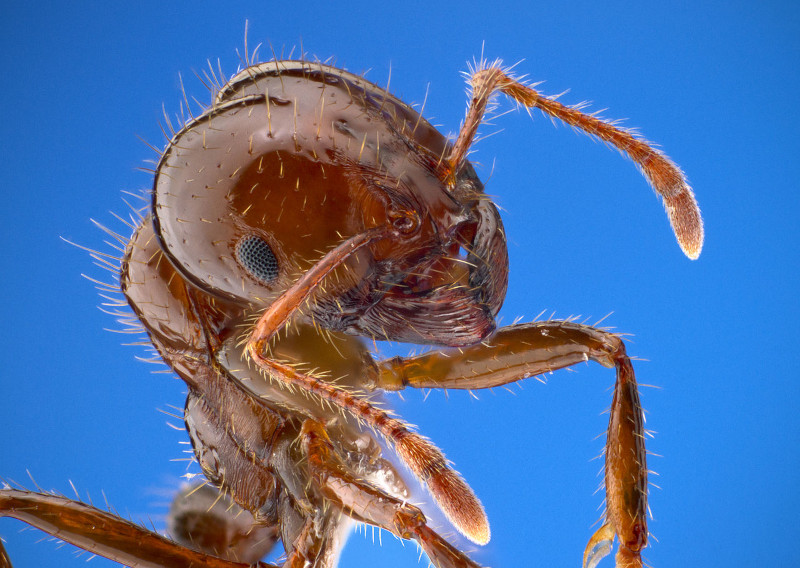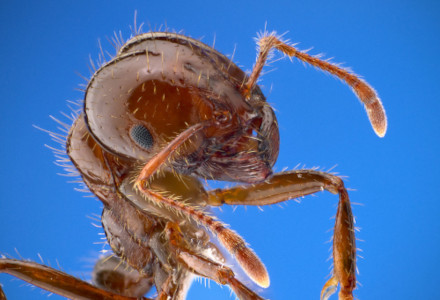
Photographer: Alex Wild
Public Domain Image
Fire Ant Facts
- Firstly, Fire Ant serves as the common name for several species of ants in the genus Solenopsis, all of which sting.
- Furthermore, these tiny but surprisingly powerful and dangerous invertebrates often attack small animals and can kill them.
- Most notably, other species of ant just bite and then spray acid on the wound. However, these ants bite only to get a grip and then sting.
- In addition, after biting, the insect then injects a toxic alkaloid venom called solenopsin, causing an extreme burning sensation, hence the name.
Related Articles
Argentine Ant Bulldog Ant Driver Ant
Fire Ant Physical Description
Firstly, given that the term Fire Ant applies to several related species, physical characteristics vary somewhat between the different species.
Furthermore, even within the same species, physical differences exist between the three different castes existing within the colony.
In the coloring of the invertebrate, all castes tend to have a copperish-brown head and body, along with a rather darker abdomen.
However, the workers tend to display darker shades and vary in length from a truly diminutive 0.08 – 0.24 in (2 – 6 mm).
- Kingdom: Animalia
- Phylum: Euarthropoda
- Class: Insecta
- Order: Hymenoptera
- Family: Formicidae
- Genus: Solenopsis
Fire Ant Distribution, Habitat, and Ecology
Although the various forms of Fire Ant evolved as native to regions of South America, many have now spread to widely scattered sections of the globe.
In countries such as the United States, in North America, Australia, Taiwan, and China, the animal now constitutes a dangerous invasive species.
Firstly, small groups of queens or single queens found colonies. Further, even if only one queen survives, within a month or so, the colony can expand to thousands of individuals.
In addition, the typical Fire Ant colony produces large mounds in open areas, where individuals primarily feed on young plants, seeds and sometimes crickets.
These ants also tend to be more aggressive than most indigenous species, thus they have pushed many species out, even possibly into extinction.
Finally, the queens may live as long as 6-7 years. During their lifetimes, these can produce up to 3,500 eggs per day.
That adds up to roughly 9 million eggs produced during a single queen’s lifetime.
Species Sharing Its Range
Hooker’s Lips Royal Panaque Viscacha
Check out our other articles on Lake Toba, Spiny Bush Viper, Caracal, Atlantic Trumpetfish, 7 Breathtaking Beaches of the World

